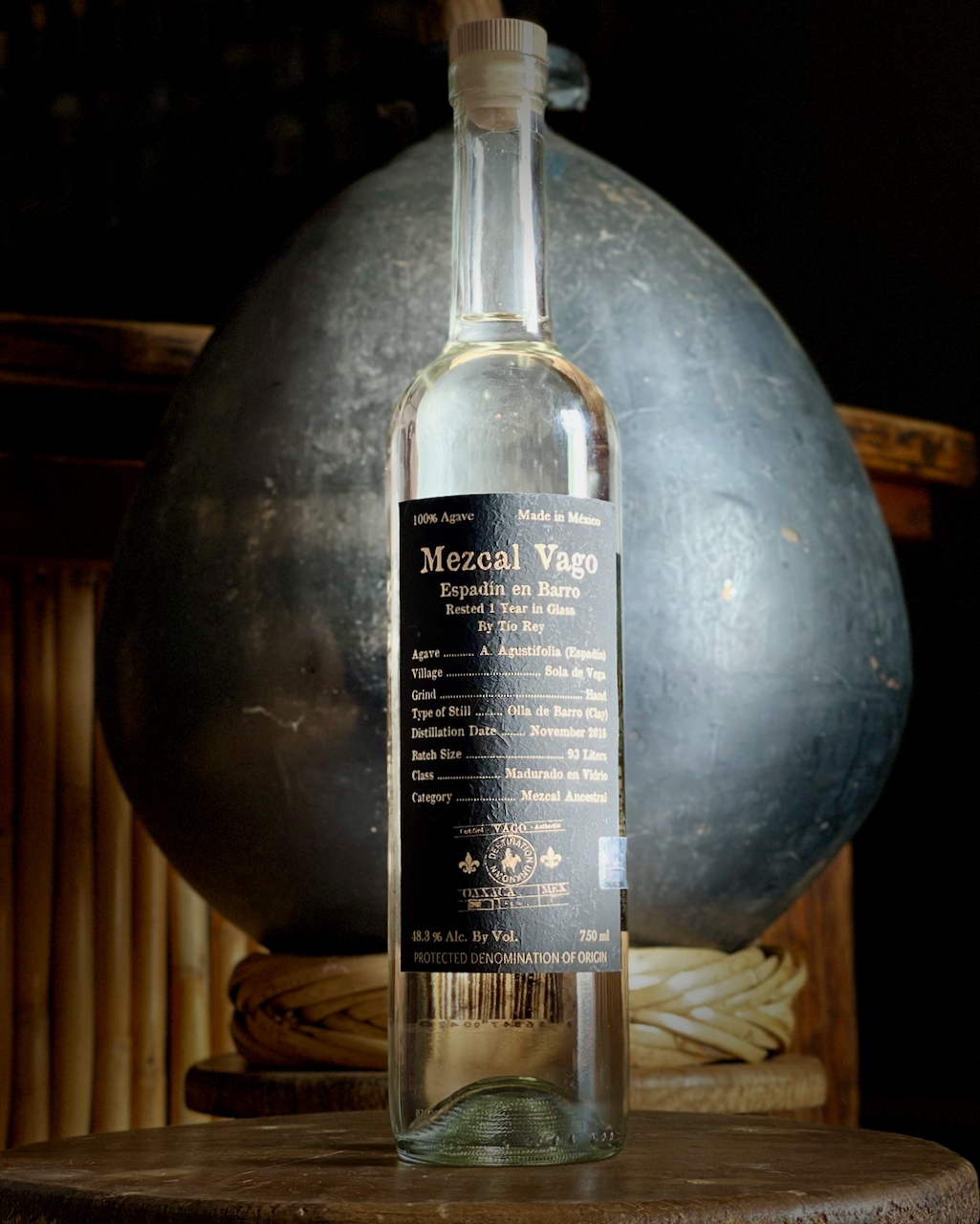Mezcal Vago Ensamble en Barro
The Mezcal Vago Ensamble en Barro is made by Salomon Rey Rodriguez (Tío Rey) in Sola de Vega, Oaxaca (16°28'44.72"N 96°57'42.80"W).
Tío Rey grows many different agave types on his property. He uses a different blend of different agaves for each batch of Ensamble en Barro depending on which agaves are ripe and what he thinks will meld well together. Because of this technique, the Ensamble en Barro is similar to a “field blend” in style, where the exact ratio of agave types in a batch will never be repeated.
Like all Mezcal Vago batches, all the agave types are cooked, crushed, fermented, and distilled together. Percentages of agave types on the label are dry weight of the piñas before they are roasted underground.
These unique batches are individual works of art that are not just unique and special for their unique flavor profiles, but are educational in that one can analyze different flavor variances alongside different agave type ratios. These unique mezcals are great for the consumer looking for something different.
This Mezcal is a great expression of Olla de Barro techniques at an affordable price point. Although every Ensamble en Barro batch is unique, they are generally rich, earthy and full bodied. The mineral and clay tones clearly define its style. The Ensamble en Barro is often used in Mezcal Vago tasting flights to accent Aquilino’s Espadín and Elote.
Producer: Salomón Rey Rodriguez

Location: Sola de Vega, Oaxaca
The palenque and agave fields of Salomón Rey Rodriguez or “Tío Rey” (Uncle Rey) are located in the famous mezcal region Sola de Vega. The mezcaleros in this region distill mezcal almost exclusively using clay pots “Olla de Barro”.

Tío Rey’s town of Gulerá is about 15 minutes up the valley and is part of the municipality Villas Sola de Vega. The lush mountain valley is a 2.5-hour drive from Oaxaca and sits at 1450 M above sea level.
Tío Rey has a great supply of spring water that flows year round and contributes to the unique flavor of his mezcals. The mineral rich soil and relatively cooler climate make for a perfect spot for growing a variety of agaves. Sola de Vega has the most diversity of agave in Oaxaca and therefore the world. Salomón Rey has at least 15 varieties of agave that he cultivates, including: Espadín, Coyote, Arroqueño, Mexicano, Tobalá, Sierra Negra, Madre Cuixe and Barril.
Sola de Vega agave maturation times:
Espadín - 7 -12 years
Mexicano - 7- 12 years
Arroqueño - 9 - 25 years
Coyote - 5 - 10 years
Sierra Negra 10 -25 Years
Tobalá - 8 - 18 Years
The palenque (distillery) is at Tío Rey’s ranch where he lives full time with his family. He built it approximately 10 years ago from parts of an older palenque that was his fathers. It moved around from nearby locations over the years. The lineage of mezcaleros in Tío Rey’s family could arguably go back thousands of years.
Tío Rey has never produced mezcal commercially before Mezcal Vago and produces exclusively for Mezcal Vago.
Tío Rey’s batch sizes are generally from 100 liters to 450 liters. He has two classic earthen ovens that can each hold around three tons. One oven is the normal dug out hole in the ground and lined with large river rocks and the other is dug straight into bedrock. He roasts each batch for 2 to 3 days.
The cooked agave is hand ground with wooden mallets called canoas y masos. The roasted piñas are chopped slightly with a machete then the pieces are placed on a wooden platform and pounded with the mallets. An incredibly laborious technique but they are sure the flavor is better this way when not molested by such modern technology as a cement wheel and horse!

Tío Rey has three fermentation vats. Two are typical vats, cylindrical and made from pine. The third is made from the trunk of a large Pino Sabino (Pine tree) hollowed out in the shape of a canoe and has been in use for 90 years!
For distillation, Tío Rey uses a series of clay pots. The clay pots are called “Oll de Barro” in Spanish. That is why Mezcal Vago refers to its mezcals that are distilled in this manner as “en Barro.” They hold about 50 liters each. Each pair of pots shares a fire. The stills are made of stacks of two pots. One that holds the mash and has an open top, and another with an open bottom that rests on top of the first one. On the top pot there is an upside-down stainless steel bowl that water continually runs in and out of. When the heat from the mash rises and hits the cool top created by the water, condensation occurs. An agave leaf works as a large spoon to catch the dripping condensation (mezcal) and runs into a reed that flows the mezcal into the collection container.
This whole process is laborious and takes around 4 times the effort of a copper still and stone tahona method. Tío Rey never adds water to his mezcal post distillation. Cuts are made by taste and smell.
All of Tío Rey’s Mezcal go through a simple triple sediment filtration through tubular cellulose filters. The bottling is done by hand in the city of Oaxaca. The light filtration is the only way the mezcal is affected between how it was made on the palenque and how it ends up in the bottle.






